Whether you’re a first-time gardener or a seasoned veteran, growing purple hull peas can be a rewarding experience. These sweet and starchy legumes are a favorite of Southern cuisine, adding texture and flavor to many popular dishes. But before you get started, it’s important to understand the best time of year for planting – and that depends on your local climate and weather patterns. In this blog post, we’ll cover everything you need to know about when to plant purple hull peas so you can have your gorgeous garden in full bloom as soon as possible!
All about Purple Hull Peas You Need To Know
Purple hull peas are a versatile and delicious vegetable that can be enjoyed in a variety of ways. Whether you prefer them cooked up as simple side dishes, added to salads, or blended into soups, there’s something for everyone when it comes to purple hull peas. [1]
In addition to their delicious flavor, these tiny legumes are packed with health benefits! They are rich in vitamins and minerals, including potassium, magnesium, calcium, phosphorus, iron and zinc. They are also a good source of dietary fiber which can help keep you full longer and prevent constipation.
If you’re looking for something new and exciting to add to your dinner rotation, look no further than purple hull peas! Whether you choose to enjoy them simply cooked, or blended into a heartier dish, you’re sure to love their delicious flavor and nutritive benefits. Why not give them a try today? You won’t be disappointed! [2]

Purple Hull Peas Varieties
Purple hull peas, also known as southern peas or cowpeas, are a type of legume grown in the United States. They have a thick, dark-purple outer shell that contains small black seeds. These peas are typically eaten fresh in summer months and dried for winter storage. [3]
There are many varieties of purple hull peas available to gardeners, each with different characteristics. The most popular varieties are:
Tricolor Blend
The Tricolor Blend is a mix of three different types of purple hull peas. It includes the popular white acre, zipper cream, and champion varieties. This blend produces a variety of coloring in the pods, making it an attractive addition to any garden. The peas are known for their sweet flavor and tender texture when cooked.
Mississippi Silver
Mississippi Silver is a white-seeded variety of purple hull peas. It produces an abundance of large pods that are easy to shell and contain sweet, creamy tasting peas. The plants are also quite drought tolerant, making them a good choice for hot, dry climates.
Zipper Cream
The Zipper Cream variety of purple hull peas is one of the most widely-grown varieties in the United States. This variety produces large, sweet pods that are easy to shell and contain a creamy white interior. The plants have an upright growth habit and can reach up to 3 feet tall when mature.
White Acre
White Acre is one of the most popular varieties of purple hull peas. It has a mild flavor and produces large, tender pods. The plants are fast-growing and can reach up to 4 feet tall when mature.
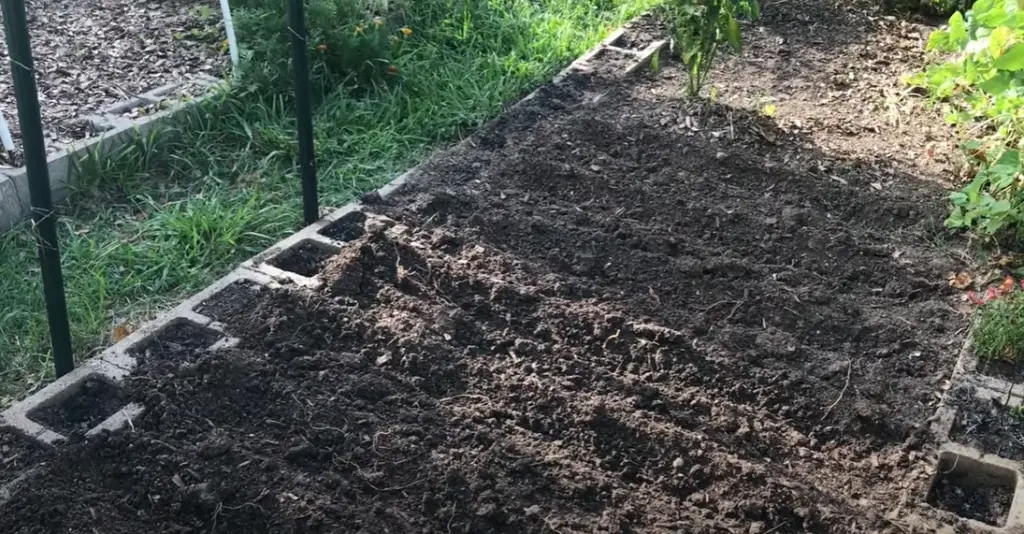
Mississippi Purple
The Mississippi Purple variety of purple hull peas is known for its dark purple color and sweet flavor. It produces an abundance of small to medium-sized pods with a creamy interior that is easy to shell. The plants can reach up to 4 feet tall when mature.
Blackeye Creamy White
The Blackeye Creamy White variety of purple hull peas has large pods with a creamy white interior and sweet flavor. The plants are fast-growing and can reach up to 5 feet tall when mature. This variety is known for its resistance to both drought and disease.
Champion
The Champion variety of purple hull peas produces large, tender pods and has an upright growth habit. The plants can reach up to 5 feet tall when mature and are known for their sweet flavor and high yield. It is also resistant to drought, making it a good choice for hot climates. [4]
What Is the Best Time to Plant Purple Hull Peas?
When planting purple hull peas, timing is of the utmost importance.
Spring
Spring planting is the most common time of year to plant purple hull peas. This is due to the fact that the soil temperatures need to be at least 50°F for germination of seeds. If planted too early, before the ground temperature has reached this point, the plants may fail and yield no crop.
It’s advised that peas should be planted from late February to mid-April, depending on the region you’re in. It’s important to note that purple hull peas can be more sensitive to cold temperatures than other types of peas, so keep a close eye on the weather and choose an appropriate day for planting.
Summer
The summer months are typically not the best time to plant purple hull peas, as high temperatures can cause the plants to fail. It is possible to start a late summer planting in some regions, but it’s important that you monitor the soil temperature and watch for signs of wilting or other stress on the plants.

Fall
Fall is a great time to plant purple hull peas, as cooler temperatures allow the plants to thrive and produce an abundant crop. It’s important that any fall planting should be done before the ground temperature drops below 50°F for germination of seeds.
In some regions, it’s even possible to start a late winter planting in early February, if the soil temperatures are warm enough and no frost is expected. This allows for an even earlier harvest of peas, as they will mature quickly due to the cooler temperatures in fall and winter. [5]
How to Grow Purple Hull Peas?
Purple hull peas are a unique type of garden legume that has been popular in the southern United States for many years. They are easy to grow and can be harvested once they mature in late summer or early fall. Here are some tips on how to successfully cultivate purple hull peas in your garden:
Step 1: Start with quality seeds
When it comes to growing purple hull peas, the quality of your seeds is essential. Look for seeds that have a good germination rate and are disease-free. You can either purchase these from a local garden center or online seed catalog.
Step 2: Choose the right location
Purple hull peas prefer full sun and fertile soil with plenty of drainage. They will also tolerate partial shade, but won’t produce as much fruit if planted in too much shade. Make sure to choose a spot that has plenty of room for the vines to grow without crowding other plants.
Step 3: Plant your seeds
When planting purple hull peas, keep them about 8 inches apart and 1 inch deep. You can either broadcast your seeds across the garden bed or plant them in rows. Make sure to keep the soil moist until they germinate and start to sprout, then begin watering a few times per week.
Step 4: Provide support
Purple hull peas are a vining plant, so it’s important to provide some type of trellis or support for the vines to climb. This will help keep the plants upright and make harvesting easier.
Step 5: Harvest when ready
When your purple hull peas are mature, they should have pods that are 4-6 inches in length and a deep purple color. Gently remove the pods from the vine and enjoy their sweet flavor! To preserve them for later, you can blanch and freeze the peas or dry them for future use.
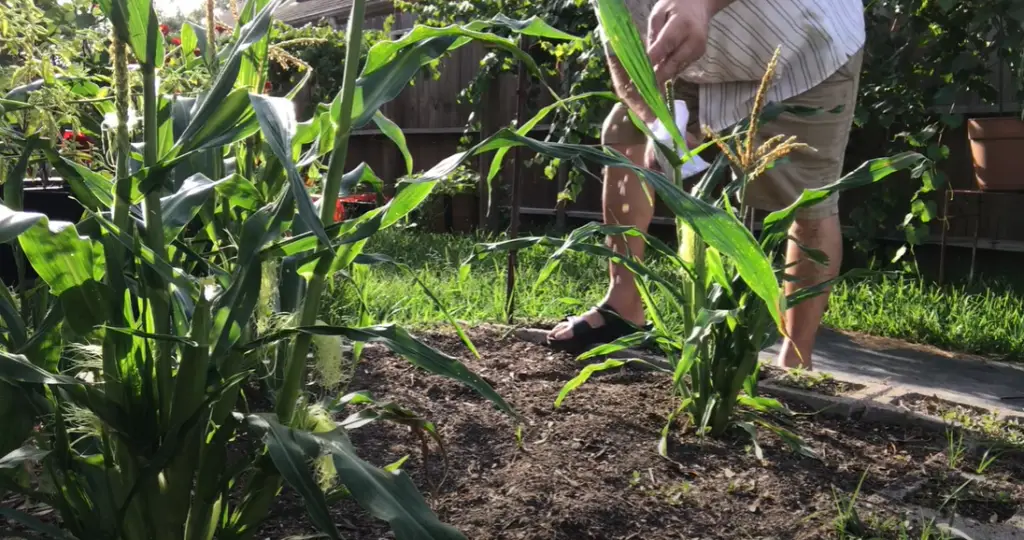
Step 6: Enjoy the bounty!
Once your purple hull peas are harvested, it’s time to enjoy their sweet flavor. They can be eaten fresh or cooked into soups, stews, casseroles, and more. You can even save some of the dried peas to plant next year and enjoy an even bigger harvest!
Step 7: Keep soil healthy
Once your purple hull peas have been harvested, it’s important to keep your soil healthy for future crops. Add a layer of compost or aged manure to replenish lost nutrients and add organic matter. You can also mulch around the plants to help retain moisture and reduce weeds. With these simple steps, you can ensure your purple hull peas will thrive year after year! [6]
How to Maintain Purple Hull Peas?
Caring for purple hull peas is not difficult. In fact, it’s quite simple. Here are some tips on how to properly care for them:
Watering
Purple hull peas should be watered regularly, but not too much. Allow the soil to dry slightly between watering sessions. This will also help prevent disease and pest problems.
Fertilizing
Fertilizing your purple hull plants is important for healthy growth and productivity. Use a balanced fertilizer every two weeks throughout the growing season. Avoid over-fertilizing, as this can cause the pods to become tough and bitter.
Pest Control
Keep an eye out for pests such as aphids and spider mites, as they can do significant damage to your purple hull pea plants. Treat any infestations promptly with a suitable insecticide or miticide.
Tips & Tricks
Picking:
- Select only young, tender peas with crisp pods.
- If you pick the peas when they are young and tender, they will have a much sweeter taste than older peas.
Storage:
- Store fresh, uncooked purple hull peas in a sealed container in the refrigerator for up to 1 week.
- Cooked peas can be frozen for up to 3 months.
Cooking:
- Boil the peas in a large pot of lightly salted water for 30 minutes.
- Remove the lid and simmer uncovered for an additional 10 minutes, or until the peas are tender.
- Drain off the cooking liquid and serve your delicious purple hull peas.
- Add your favorite seasonings to enhance the flavor of the dish. [7]
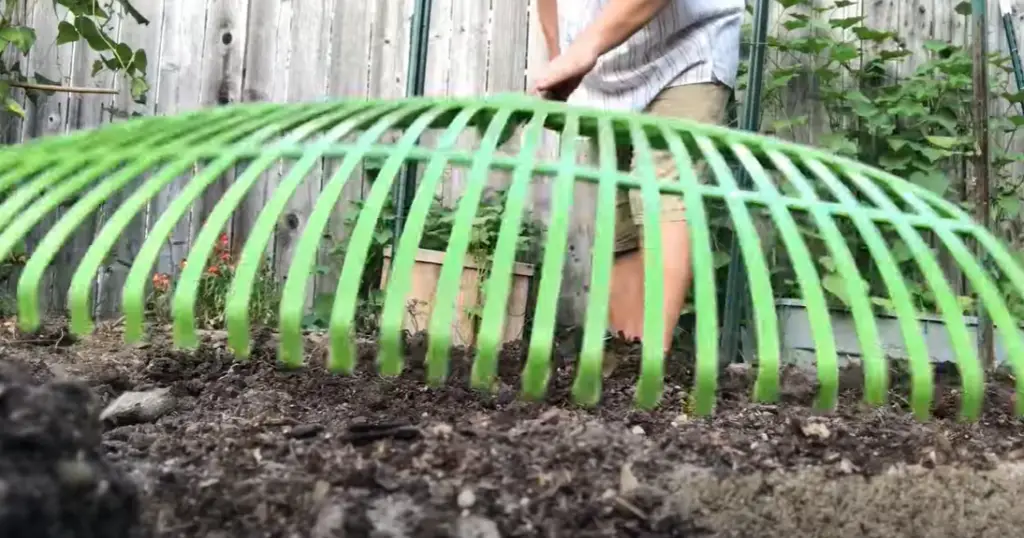
What Diseases Can Occur in Purple Hull Peas?
Purple hull peas are highly nutritious and can be a great addition to any diet. Unfortunately, they are also prone to certain diseases which can affect their quality and yield. Common diseases that can occur in purple hull peas include the following:
Cercospora Leaf Spot
This fungal disease is caused by the fungus Cercospora carotae and is characterized by dark patches that can appear on both the upper and lower surfaces of leaves. It can severely reduce yields if left untreated, so it’s important to be vigilant for signs of this disease and take prompt action.
Actions to get rid of this disease:
- Remove infected plant debris from the area
- Rotate crops to reduce chances of re-infection
- Apply fungicides as needed
Root Rot Disease
Root rot is a fungal disease that can cause stunted growth and yellowing of leaves in purple hull peas. The fungus thrives in moist environments, so it is important to take steps to reduce the risk of infection.
Actions to get rid of this disease:
- Avoid overwatering and excessive irrigation
- Improve soil drainage to reduce chances of re-infection
- Rotate crops to reduce the risk of re-infection
- Apply fungicides as needed
- Practice crop sanitation by removing infected plant debris from the area
- Ensure adequate air circulation between plants to avoid overcrowding
- Consider using resistant varieties of purple hull peas to reduce chances of disease occurrence
Mite Damage
Mites can cause damage to purple hull peas by feeding on both leaves and vines. The damage is characterized by yellow spots or stippling, as well as a silvery webbing along the affected parts of the plant.
Actions to get rid of this problem:
- Reduce dust and debris in the garden to reduce mite activity
- Remove any affected leaves and stems from the garden
- Apply insecticidal soap or neem oil to help get rid of these pests
- Consider using predatory mites as a natural control method
- Make sure to do regular checks on the crops so that you can identify signs of infestation early on and take swift action.
Powdery mildew
Powdery mildew is a fungal disease which can affect both leaves and pods of purple hull peas, resulting in a white powdery coating on the affected parts.
Actions to get rid of this problem:
- Avoid excessive nitrogen fertilizer applications as these can increase the chances of infection.
- Increase air circulation in the garden by thinning out plants and avoiding overcrowding.
- Apply fungicides as needed
- Consider using resistant varieties of purple hull peas to reduce chances of disease occurrence
- Avoid overhead watering as the fungus thrives in moist environments
- Remove any affected leaves or stems from the garden as soon as possible, to avoid further spread.
Bacterial blight
Bacterial blight is caused by the bacteria Pseudomonas syringae and can cause dark lesions on both leaves and pods of purple hull peas. This disease can reduce yields significantly if left unchecked.
Actions to get rid of this problem:
- Avoid working in wet conditions and avoid excessive irrigation.
- Improve soil drainage to reduce chances of infection.
- Remove infected plant debris from the area as soon as possible.
- Apply copper-based fungicides as needed
- Consider using resistant varieties of purple hull peas to reduce chances of disease occurrence
- Practice crop sanitation by rotating crops and avoiding overcrowding in the garden.
- Take care to avoid spreading the disease by washing hands and tools with water and soap before handling other plants.
- Make sure to dispose of all infected plant debris properly, as this can help stop further spread of infection. [8]
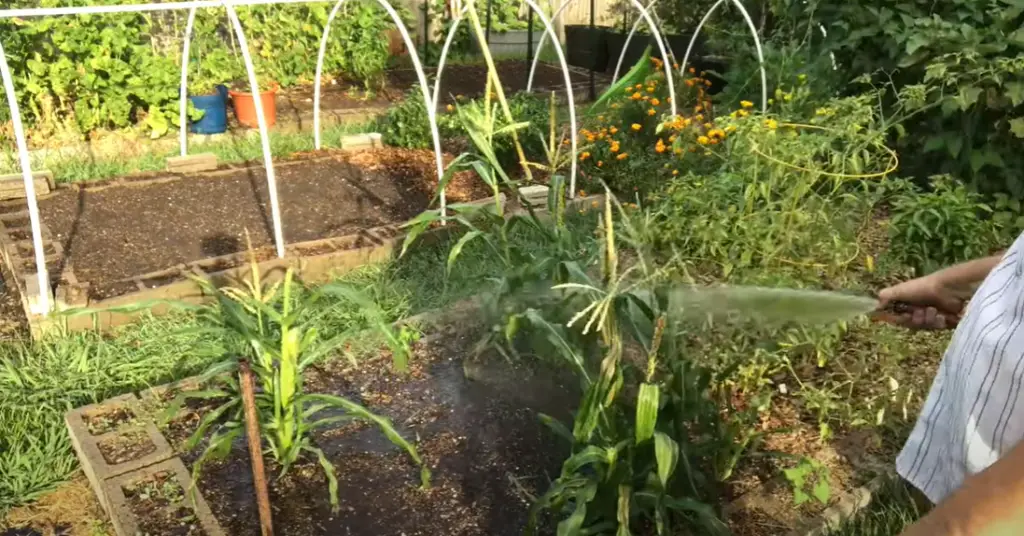
FAQs
How long does it take for purple hull peas to grow?
Purple hull peas typically take about 70-90 days to grow and mature. The amount of time it takes for a crop to reach maturity depends on the variety, as well as soil, climate, and other environmental conditions. In most cases, purple hull peas planted in spring will be ready for harvest by late summer or early fall. It is important to monitor the plants closely during the growing season to ensure they are getting the necessary nutrients and water needed for optimal growth. Proper soil preparation prior to planting, as well as timely watering and weeding can help you achieve optimal yields.
How many times can you harvest purple hull peas?
The frequency of harvesting purple hull peas depends on several factors, including the variety of pea and the climate in which they are grown. Generally speaking, most types of purple hull peas can be harvested two or three times per season. The first harvest should occur when the pods are full but not overly mature and contain small, evenly-sized peas. To maximize yields, it may be beneficial to wait until the second or third round of pods have developed before harvesting. Additionally, if the weather is dry and warm, it may be necessary to harvest more often to ensure that the peas do not become too mature on the vine.
Can peas be winter sown?
Yes, peas are a great crop to winter sow. Planting in late fall or early winter will allow the plants to emerge with enough time to produce a good harvest before the onset of hot summer temperatures. Peas planted this way will be less susceptible to disease and pests, and may even have better flavor when compared to spring-sown peas. When planting peas in the winter, be sure to use a seed variety that is suited for cold climates. Planting too early in the season can lead to poor germination and slow growth.
Are purple hull peas hard to grow?
Purple hull peas are not particularly difficult to grow. They require full sun and a soil that is fertile, well-drained, and slightly acidic (pH 6.0-6.8). The plants do best when temperatures remain steady at 70-75°F during the day and 60-65°F at night. Adequate water, weeding, and pest control are also important.
Once established, purple hull peas can be quite prolific and will continue producing over a long harvest season. The pods should be harvested when they reach full size but before the peas inside begin to harden. Additionally, planting in succession every couple of weeks will ensure a continual harvest throughout the summer months.
Useful Video: How to Sow Purple Hull Peas || Black Gumbo
Conclusion
Planting purple hull peas is a rewarding experience that can yield delicious and healthy treats! With the right preparation, and planting at the optimal time, you can ensure successful and plentiful harvests. Though there are many variables to take into account when planting, such as soil quality, water access, and nutrients in the ground, with proper planning you can make the process of gardening seamless and enjoyable. As a wonderful addition to any garden, purple hull peas are an incredibly versatile and resilient crop to grow. Don’t be intimidated; get out there and start growing! It’s never too late or too early to start your own vegetable garden; all it takes is a little research and dedication. Have fun with it, create your own recipes from home-grown produce – bring your meals to life with fresh ingredients! Happy planting!
References:
- https://www.diys.com/purple-hull-peas/
- https://specialtyproduce.com/produce/Purple_Hull_Peas_4399.php
- https://victoryseeds.com/collections/purplehull-peas
- https://www.gardeningknowhow.com/edible/vegetables/beans/how-to-grow-purple-hull-peas.htm
- https://www.floridayards.org/when-to-plant-purple-hull-peas/
- https://www.naturallyfreehomestead.com/how-to-plant-purple-hull-peas/
- https://www.farmprogress.com/soybean/purple-hull-peas-the-survivor-of-the-garden
- https://www.gardeningknowhow.com/edible/vegetables/black-eyed-peas/southern-pea-mosaic-virus.htm





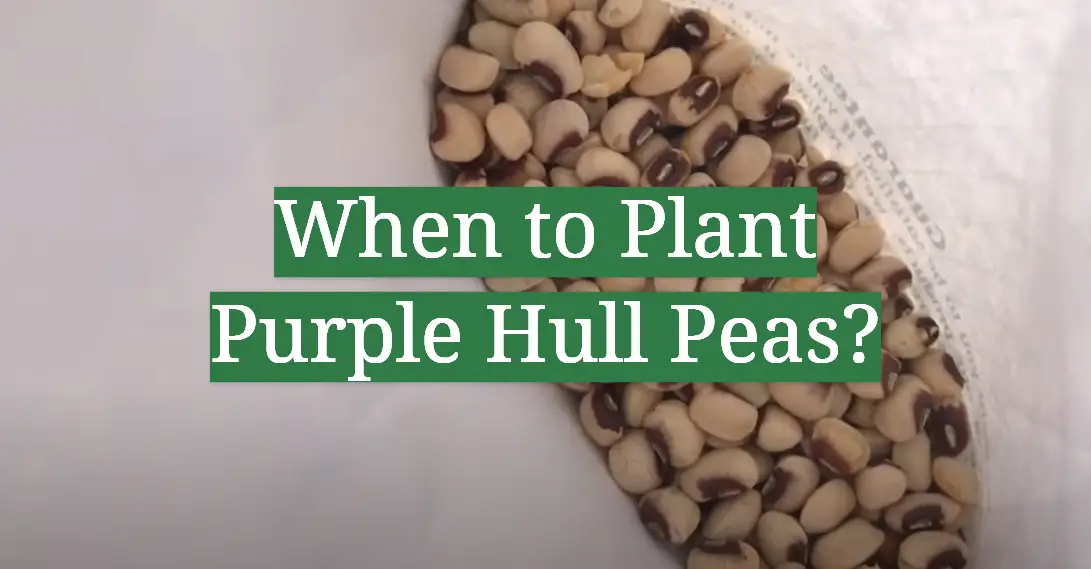



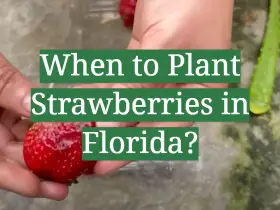
Leave a Reply
View Comments